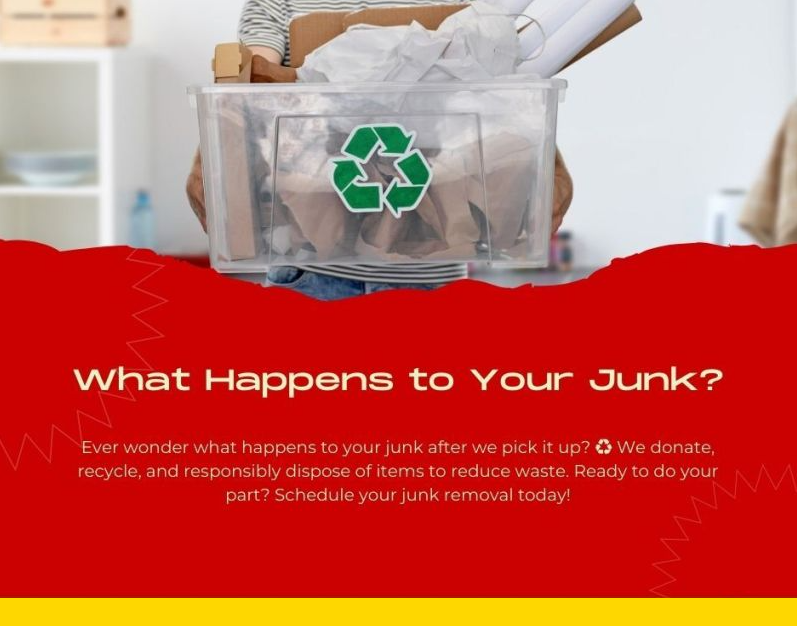We often overlook the recycling potential of everyday items, yet embracing this can make a significant environmental impact. Did you know that items like old CDs, toothbrushes, and even pantyhose can be recycled in creative ways? By rethinking our waste, we’re not just reducing landfill contributions but also supporting eco-friendly initiatives. Let’s explore how these surprising recyclables can transform our approach to sustainability and spark a greener lifestyle. Curious about how? Let’s find out!
Old CDs and DVDs
In our digital age, old CDs and DVDs often end up forgotten in storage boxes, but did you know they’re recyclable? Instead of letting them gather dust, we can breathe new life into these discs. Recycling CDs and DVDs reduces waste and supports eco-friendly initiatives.
Let’s consider transforming them into CD art. Imagine turning those shiny surfaces into creative pieces that brighten our spaces.
Alternatively, we can declutter by utilizing efficient DVD storage methods, keeping only the essentials while recycling the rest. By taking action, we contribute to a sustainable future.
Wine Corks
While we’ve tackled the idea of recycling old CDs and DVDs, let’s now uncork the potential of wine corks. Did you know that wine corks can be transformed into impressive cork crafts? By recycling wine corks, we’re not just keeping them out of landfills but also giving them new life.
Imagine creating coasters, bulletin boards, or even bath mats. Cork is biodegradable, making it an eco-friendly choice for our creative projects. Some companies specialize in wine corks recycling, turning them into flooring and insulation materials.
Toothbrushes
Let’s consider the toothbrushes we toss out every few months and how we can recycle them instead.
Many toothbrushes are made from a combination of plastics and nylon, which might seem tricky to recycle, but several programs are ready to help us out.
Recycling Programs Available
Although many people might overlook toothbrushes when thinking about recycling, several innovative programs are available to help us recycle them effectively. Various recycling initiatives aim to tackle the plastic waste from toothbrushes, ensuring they don’t end up in landfills.
One popular option is TerraCycle, which partners with oral care brands to offer free recycling programs. We can collect our used toothbrushes and send them to designated locations, where they’re transformed into new products.
Additionally, local community programs often host collection drives, making it convenient for us to contribute. By participating in these programs, we not only reduce waste but also support sustainable practices in our communities.
Together, let’s embrace these opportunities and make a positive impact on our environment.
Toothbrush Material Breakdown
Toothbrushes, though small and seemingly simple, are composed of several different materials that each play an essential role in their recyclability. Typically, toothbrush handles are made from various plastics, such as polypropylene or polyethylene, while the bristles are often nylon.
The recycling process for these materials can be complex, but it’s entirely possible to recycle them if we’re aware of the right steps.
First, we need to separate the toothbrush materials. Some specialized recycling programs accept the entire toothbrush, while others require dismantling. By participating in these programs, we guarantee these materials don’t end up in landfills.
Let’s embrace this opportunity to contribute positively to environmental conservation. Toothbrushes may be small, but their impact on our recycling efforts can be significant.
Pantyhose
When it comes to recycling, pantyhose mightn’t be the first item that springs to mind, but they offer surprising opportunities for repurposing.
We can transform these seemingly single-use items into eco-friendly alternatives. By participating in pantyhose recycling, we keep them out of landfills and contribute to a healthier planet.
Did you know they can be turned into cleaning cloths? Their gentle texture makes them perfect for dusting delicate surfaces.
Old pantyhose can also be used in the garden; they’re great for tying plants without damaging stems.
Many organizations collect them to create new products, reducing the demand for raw materials.
Let’s embrace these innovative recycling methods and make a positive impact on our environment.
Are we ready to start?
Crayons
Crayons might seem like a minor player in the recycling game, but they hold tremendous potential for creative reuse. Many of us have broken or unused crayons lying around, and instead of tossing them, let’s explore crayon recycling.
By repurposing them, we can reduce waste and release our creativity.
Here’s how we can give these vibrant sticks new life:
- Melted Crayon Art: Melt old crayons into unique artworks or colorful shapes using molds.
- New Crayons: Combine broken pieces to create new, multicolored crayons.
- Candles: Mix crayon shavings into candle wax for a splash of color.
- Greeting Cards: Use melted crayons to add artistic flair to homemade cards.
Together, we can transform discarded crayons into delightful creations.
Pet Fur
Pet fur often accumulates in our homes, especially if we’ve furry companions, but did you know it can be recycled in creative and beneficial ways? Instead of sweeping it away, we can transform pet fur into sustainable pet products.
For example, fur can be woven into yarn for crafting or even used to create eco-friendly insulation. It’s an innovative approach to pet fur recycling that reduces waste and supports a greener planet.
Additionally, local animal shelters or wildlife rehabilitation centers might accept donations of pet fur to use as nesting materials for animals.
Hair
Hair, much like pet fur, is a surprisingly versatile material that can be recycled for numerous purposes.
Let’s explore how we can make a positive impact:
- Hair Donation: By donating hair, we can help create wigs for individuals experiencing hair loss due to medical conditions. It’s a simple way to change lives.
- Oil Spills: Hair is incredibly effective at absorbing oil, making it a valuable tool for cleaning up oil spills. Hair mats and booms can soak up the mess efficiently.
- Composting: Hair is rich in nitrogen, making it an excellent addition to compost piles. It enriches the soil and promotes plant growth.
- Art and Crafts: From jewelry to sculptures, hair can be transformed into unique artistic creations.
Let’s embrace hair recycling and make a difference!
Eyeglasses
Let’s talk about the incredible impact we can make by recycling eyeglasses.
By participating in donation programs worldwide, we give the gift of sight to those in need while reducing waste.
Plus, both lenses and frames can be recycled, ensuring every part is used to its fullest potential.
Donation Programs Worldwide
While many of us mightn’t realize it, donating eyeglasses can make a significant impact on someone’s life across the globe.
Through global initiatives and community outreach, we can help provide the gift of sight to those in need. Here’s how we can contribute:
- Locate Donation Centers: Research local or international organizations that accept eyeglass donations. Many have convenient drop-off locations.
- Prepare Your Eyeglasses: Verify they’re clean and in good condition. Most programs accept prescription glasses, reading glasses, and sunglasses.
- Spread the Word: Encourage friends and family to join the cause. A collective effort amplifies the impact.
- Follow Up: Stay informed about the journey of your donation and its effect on communities worldwide.
Let’s make a difference, one pair of eyeglasses at a time!
Lens and Frame Recycling
Though many of us mightn’t consider it, recycling eyeglass lenses and frames is an essential step in reducing waste and conserving resources. By participating in lens donation programs, we can give the gift of sight to those in need, turning our old, unused eyewear into vision for someone else.
Organizations often collect these lenses, ensuring they’re cleaned and matched with individuals in communities worldwide who can’t afford new glasses.
Frame repurposing is another fantastic avenue. Instead of letting frames gather dust, we can hand them over to skilled artisans or programs that breathe new life into them. They become stylish and functional accessories again, often with creative twists.
Let’s embrace these opportunities to make a difference and support sustainable practices together.
Keys
Even though they might seem insignificant, keys are a surprisingly recyclable item that many of us overlook.
These little pieces of metal can be given a second life through key recycling and metal repurposing. Let’s explore how we can make this happen:
- Collection: Gather all the old, unused keys we can find. They often hide in drawers or on forgotten keychains.
- Sorting: Separate them by material. Most keys are made from brass, nickel, or steel, which are all recyclable.
- Drop-off: Check local recycling centers or metal scrap yards that accept keys. They’ll guarantee the materials are processed correctly.
- Donation: Some organizations, like key recycling charities, turn keys into funds for important causes.
Sneakers
When we think about what to do with old sneakers, recycling mightn’t be the first thing that comes to mind, but it should be.
Sneaker recycling is an innovative way to reduce waste and promote a greener planet. Most sneakers are made from a mix of materials like rubber, foam, and fabric, which can be repurposed into new products.
Brands are increasingly using sustainable materials, giving our worn-out shoes a second life.
Frequently Asked Questions
How Can I Recycle Plastic Cutlery?
Let’s explore recycling options for plastic cutlery. We can start by checking local recycling programs, as some accept them. Alternatively, we might find companies specializing in hard-to-recycle plastics. Let’s keep plastic cutlery out of landfills!
Where Can I Recycle Used Cooking Oil?
We can recycle used oil by taking it to nearby recycling centers. They often accept cooking oil for reuse or conversion into biodiesel. Let’s reduce waste by locating our local center and contributing to sustainable practices today!
Are There Recycling Options for Old Mattresses?
Yes, we’ve got options for mattress recycling! Let’s choose eco-friendly disposal methods like contacting local recycling facilities or donation centers. They’ll help us reduce waste and promote sustainability, making a difference for our planet.
Can I Recycle Expired Medications?
Yes, we can recycle expired medications safely! Let’s utilize medication disposal programs and drop-off sites. These options guarantee safe recycling, protecting the environment and preventing misuse. It’s essential for a healthier planet and community.
How Do I Recycle Broken Ceramic Dishes?
Let’s explore ceramic recycling methods for broken dishes. We can often take them to local recycling centers or creatively engage in dishware repurposing projects. By doing so, we contribute to sustainability and give new life to materials.


